Why This Matters
Replacing your roof is a big investment, and you want it done right. But sometimes, during a roof replacement, we find something lurking underneath that needs attention: bad roof decking.
Not sure what roof decking even is? You’re not alone. We broke it all down in this article. (Short version: it’s the wooden base your entire roof is built on. Super important.)
So what happens when the decking is damaged? Let’s walk through it—no tool belt required.
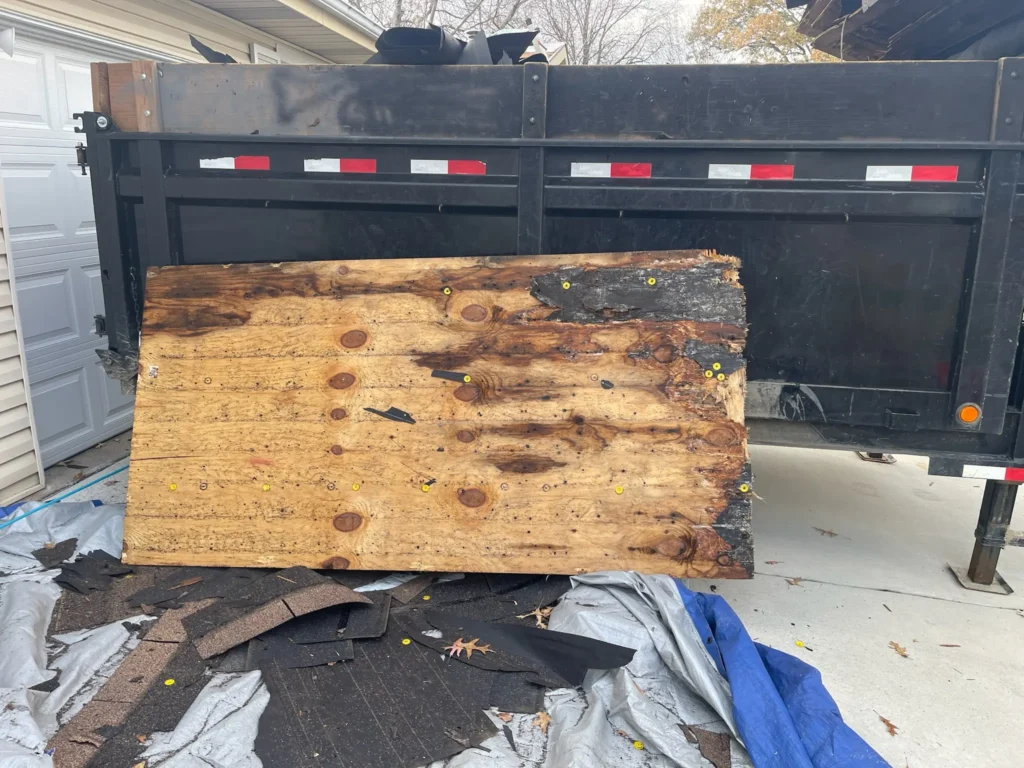
When We Discover Bad Decking
Here’s the thing: we usually don’t know your decking is damaged until we remove the old shingles and underlayment. That’s when we get our first clear look at what’s underneath.
Some common signs of damage we find:
- Soft or spongy wood: If it feels like a wet sponge underfoot, that’s a bad sign.
- Mold or water stains: Moisture has been there, and it left its mark.
- Cracks, sagging, or delamination: Basically, your decking is waving a white flag.
While it might be hidden from you, our team knows exactly what to look for. These issues are often caused by years of slow leaks, improper ventilation, or previous quick-fix roof jobs that never addressed the real problem.
A lot of the damage we find has been quietly brewing for years. Water slowly makes its way in through minor roof penetrations or flashing failures and quietly soaks into the decking. By the time you see a water stain on your ceiling, your decking might already be waving the white flag.
What We Do Next
We don’t panic (even if it looks scary). Here’s what we do:
- Stop and assess the area so we know the extent of the damage
- Remove and replace only the bad sections—no need to scrap the whole thing if it’s just a few problem spots
- Use quality materials like OSB or plywood to rebuild a strong, stable base
- Check everything to make sure it’s solid before putting down new underlayment and shingles
This process adds a bit of time, but it’s 100% worth it. We’d rather spend an extra few hours fixing it right than risk your brand-new shingles failing in two years.
We won’t just slap shingles over rotted wood. That would be like painting over a leaky ceiling and hoping for the best. Not our style. Plus, covering up damage can void manufacturer warranties, and we’re not in the business of cutting corners.
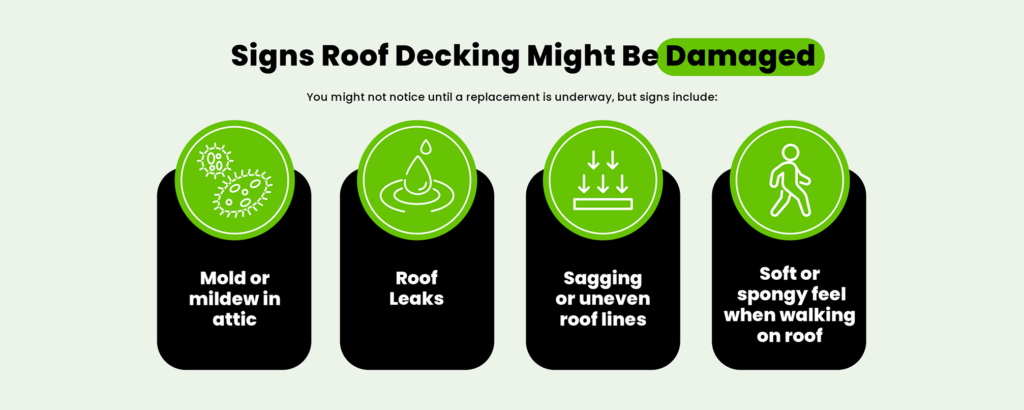
Why This is Important for Homeowners
If you’re wondering, “Why should I care what’s under the shingles?” here’s why this matters:
- Prevents leaks: Weak or damaged decking can let water seep into your attic and insulation.
- Supports the roofing system: Your shingles need a solid foundation to perform well.
- Avoids bigger issues: Mold, rot, and sagging roofs don’t get better with time. (Spoiler alert: they get more expensive.)
Skipping a decking repair can also affect your roof’s warranty. Some manufacturers require proof that the roof system, including the decking, is in good condition.
So yes, bad decking can absolutely contribute to leaks. It’s one of the most common root causes, especially in older homes or ones with previous water damage. And if left untreated, water can damage insulation, ceiling materials, and even electrical wiring—leading to far bigger problems than you bargained for.
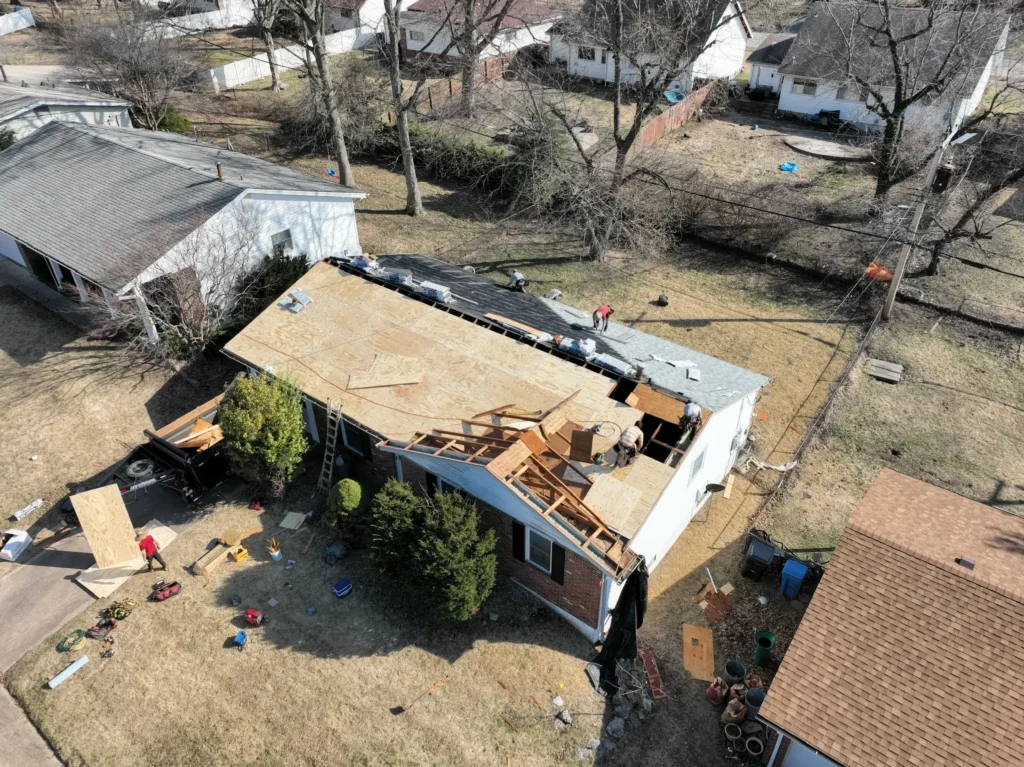
Cost and Expectations
Let’s talk money—because nobody likes surprises.
We include a few sheets of replacement decking in most quotes, just in case. We’re not fortune tellers, but we plan ahead.
If we find more damaged decking than expected, we won’t just move forward without you. We stop, show you the damage, and talk through the options. Transparency is key.
Yes, replacing decking does increase the cost a bit, but it also protects your home and extends the life of your new roof. And we’re not talking thousands of dollars here. Often, it’s a few hundred bucks that make a world of difference in quality and durability.
In some cases, especially with older homes, we may recommend upgrading the decking entirely if the material is outdated or doesn’t meet modern code standards. While this can be a bigger investment, it gives you peace of mind knowing your new roof is built on a solid, up-to-code base.
(Pro tip: if another contractor doesn’t mention decking in their quote, ask why. They might be skipping this important step.)
Real-World Example (with Photos)
We’ve seen it all—from minor soft spots to full-blown horror shows. One of our recent jobs had some seriously sketchy decking hiding under an older roof.
Before: Shingles removed. Decking visibly discolored, soft, and moldy in spots. Yikes.
During: Damaged boards carefully taken out. New plywood installed and securely fastened. We even discovered some gaps that had been “patched” with scrap wood by a previous contractor. Not on our watch.
After: Clean, solid, safe. A solid base ready for a long-lasting roof.
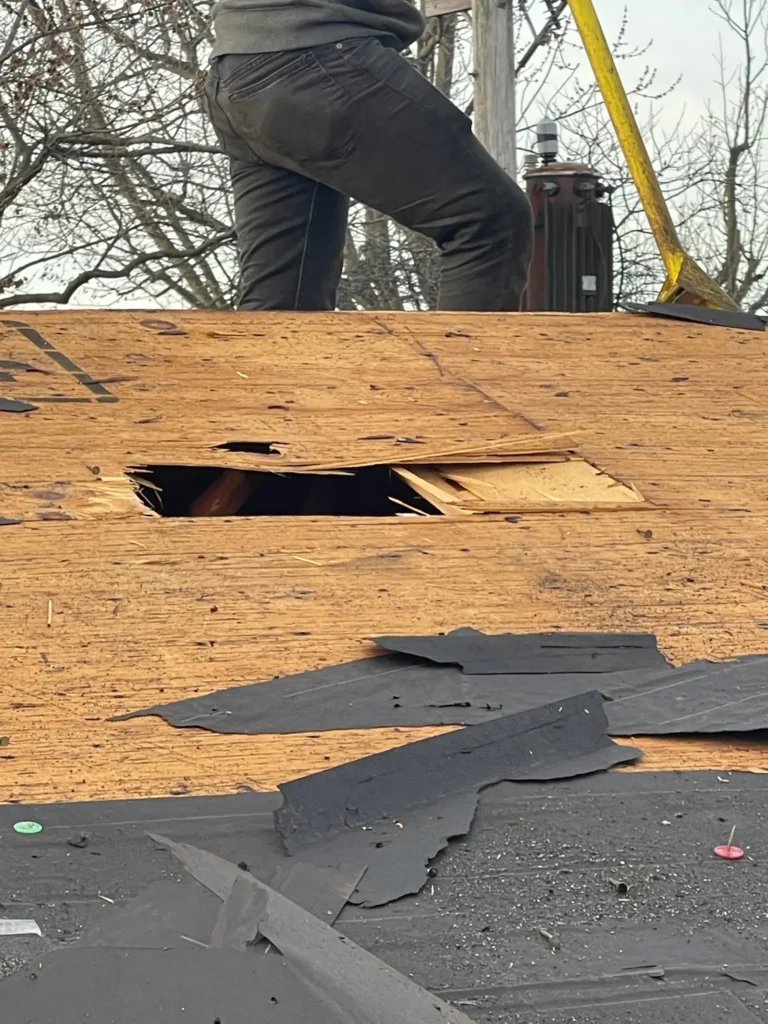
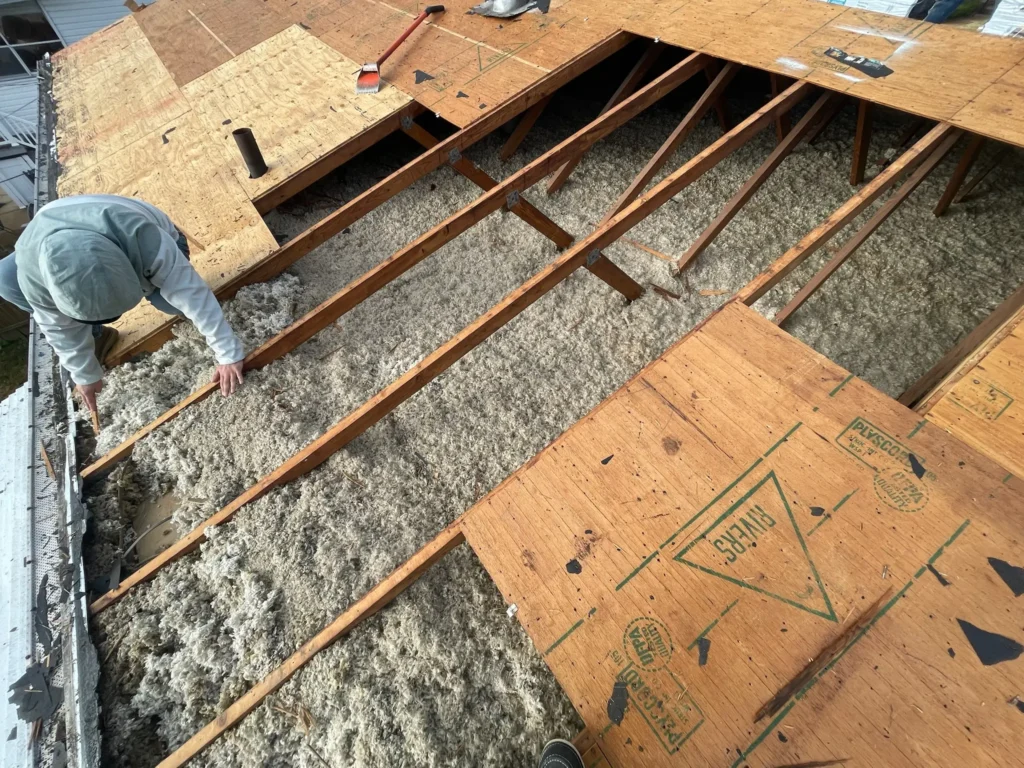
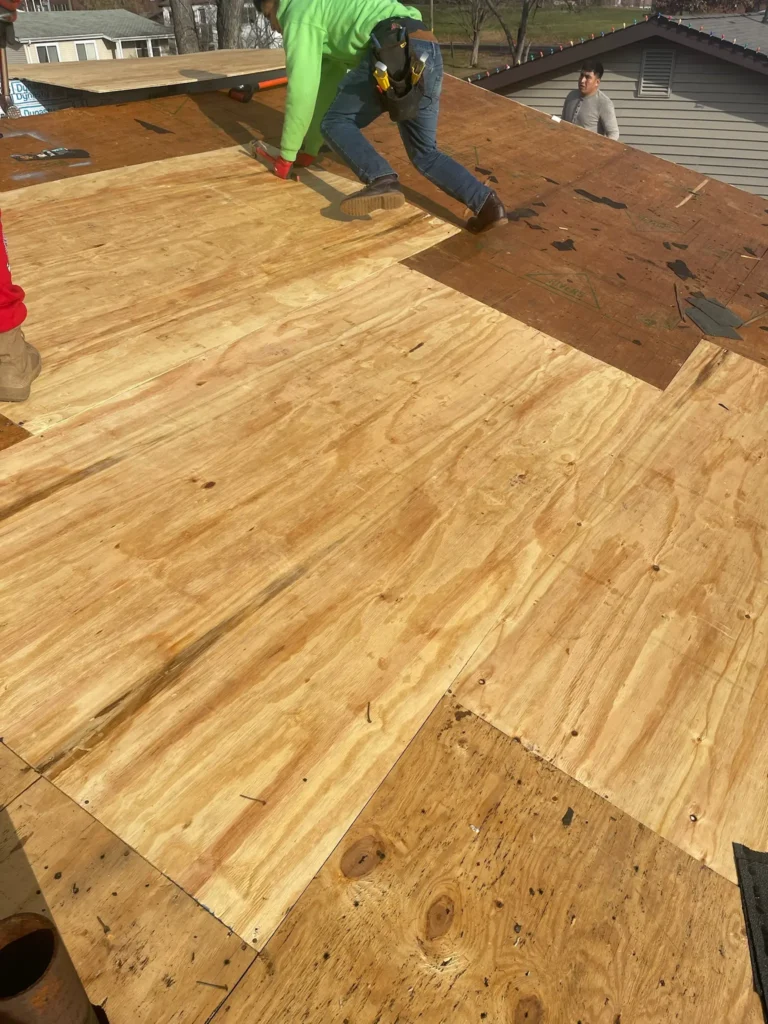
This kind of work might not be the flashiest part of roofing, but it’s some of the most important. Think of it like setting the foundation before you build a house—skip it, and the whole thing wobbles.
And yes, we get it—it’s not the glamorous part. There’s no HGTV moment when the new decking goes in. But trust us, your future self (and your future ceiling) will thank you.
Need Assistance with Your Claim?
Brody Allen Exteriors can help guide you through the process and ensure your roof is repaired to the highest standards. Many of your neighbors have successfully navigated their insurance claims with our expert assistance.
Final Thoughts
Your roof is more than just shingles—and we believe in doing the job right, from the inside out. Addressing bad decking during a replacement isn’t just good craftsmanship, it’s smart homeownership.
If you think your roof might be due for replacement or you’ve noticed signs of leaks or sagging, don’t wait. The earlier we catch it, the better.
Want to learn more or see other roofing tips? Head to the Brody Allen Exteriors Learning Center.
And if you’re ready for an inspection or quote, give us a call. We’re happy to check things out—and we promise not to bring the horror show analogies with us. (Unless you want them.)
If you’re someone who likes diving into the details, you might enjoy this guide from Roofing Calculator on the types of decking materials and how the cost compare. Knowledge is power, especially when it keeps your house dry.
Still have questions? Reach out and talk to one of our pros. We’ll walk your roof, give you honest answers, and help you understand what’s happening above your head—without the jargon, pressure, or surprise costs.

Stephen Maassen
MISSOURI'S BEST
Roofing Professionals You Can Trust
When you choose Brody Allen Exteriors, you're choosing a team that's dedicated to protecting homes. We live and work in this community, and we're here to ensure your roof is strong, durable, and built to last.



